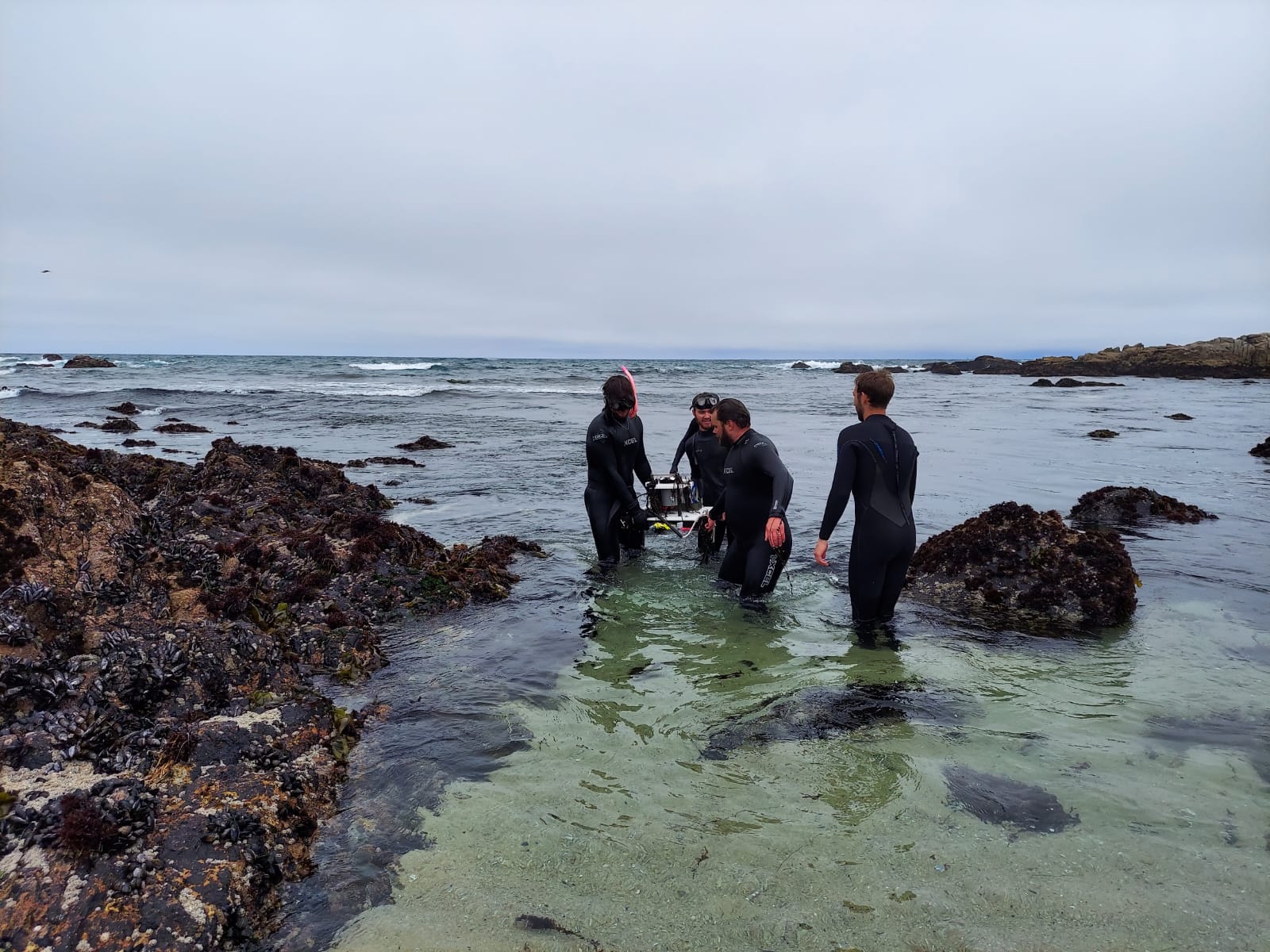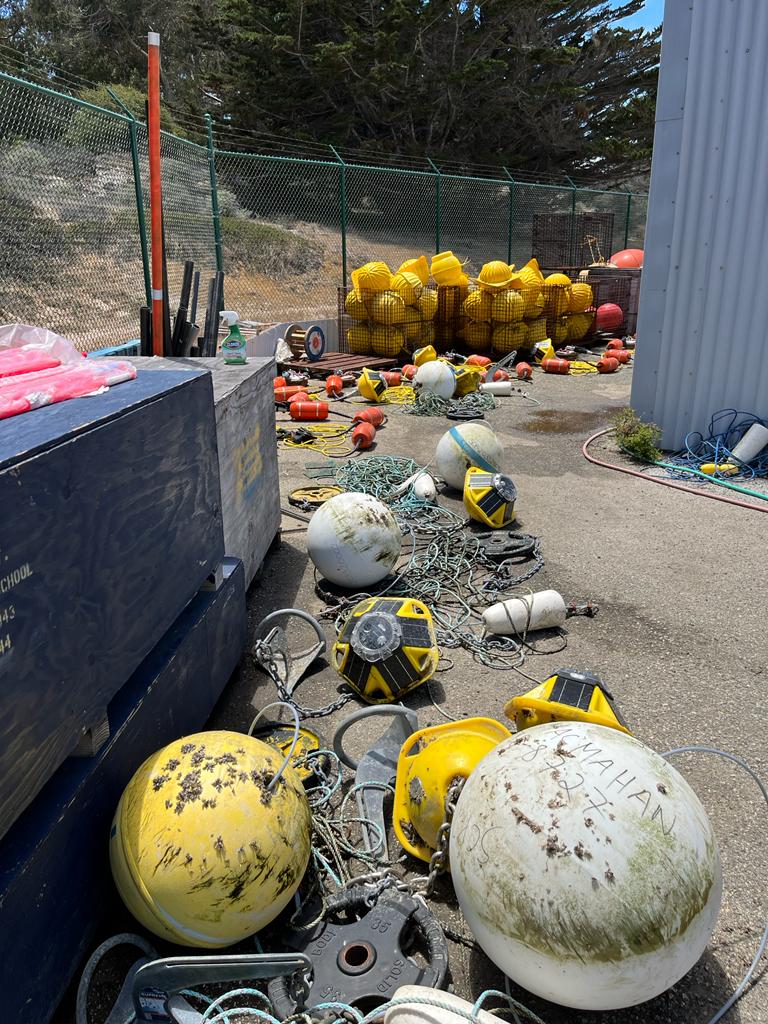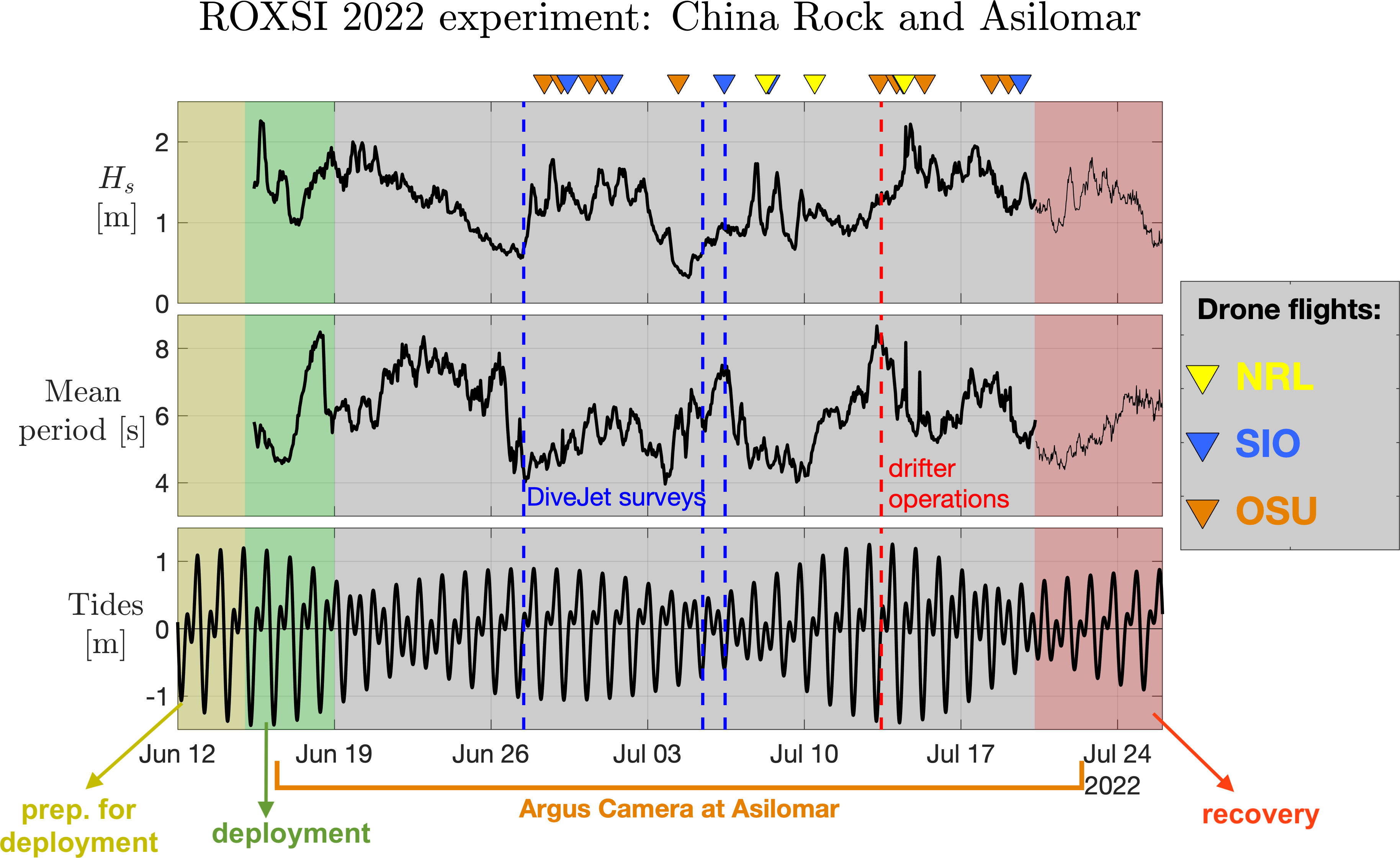After a busy month and a half, we have officially wrapped up the 2022 ROXSI field experiment! Our boat and shore crews did a superb job and recovered all of our moorings in just a few days.

Recovery of an ADCP from shore at Asilomar on 07/20.
Since algae and kelp are more than happy to grow on our instruments, the first step back in the laboratory is to get our hands dirty and clean all the instruments. Once again, the ROXSI team had everything under control, speeding the recovery of the instruments and the invaluable data they have measured.

Recovered instruments back in the laboratory. The floats in the bottom of the photo came back with algae and barnacles.
One great advantage of ROXSI is the wealth of data we have got. Over one month, we measured small and big waves, short and long-period waves, during neap and spring tides. At the offshore edge of our arrays, significant wave heights were usually greater than 1 m (3 feet), which can get much bigger as they shoal and break on the shore — in fact, how the rocks affect this process of wave transformation will be one of the primary results from ROXSI.

Wave conditions and tidal elevation throughout the ROXSI 2022 experiment. The top panel shows the significant wave height (Hs), mean wave period is in the middle panel, and the bottom panel shows tidal elevation. Wave conditions were taken from moorings B03s and ISPAR (see planning/logistics tab at roxsi.edu) and tides at the Monterey harbor are provided online by the National Oceanic and Atmospheric Administration (NOAA). In addition to the mooring data, times when other types of measurements were taken are also indicated.
We are also excited about the different components in ROXSI and looking forward to putting together the different pieces of the rocky shores puzzle. We have the large-scale moorings deployed in China Rock and Asilomar, the small-scale array at Asilomar, camera footage, a brief drifter deployment, and several drone flights throughout the experiment. We will also use these data along with computer models and satellite data to learn as much as we can about waves breaking on the rocky shores of Monterey over a wide range of scales: from the waves sloshing over the rocks to the wave-driven currents that flow along the bays and headlands in the Monterey peninsula.

